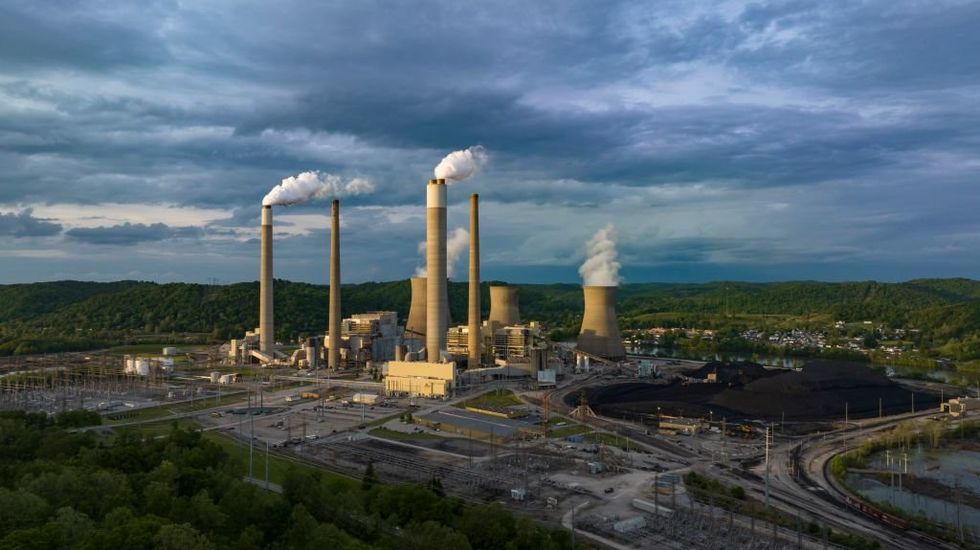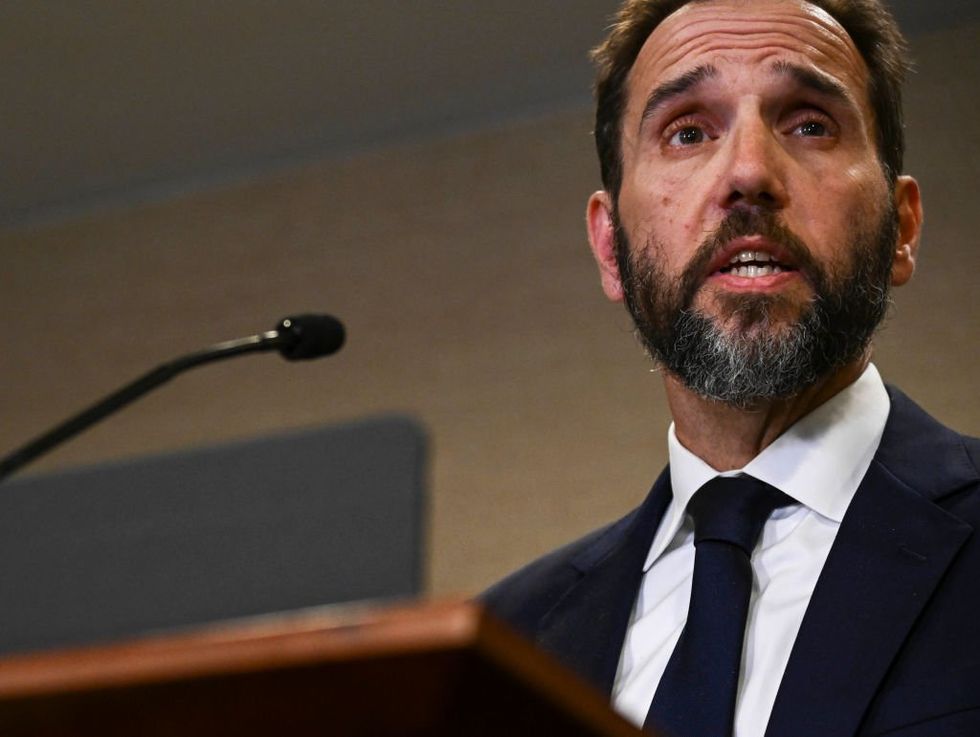EPA ignores the reality of America’s electricity demands
Electricity demand has surged after more than a decade of slow growth, when it increased by just 1%. New technologies, such as artificial intelligence, are driving much of this rise, with data centers expected to consume 8% of the nation’s electricity by 2030. The domestic production of semiconductors is also contributing to this trend, prompting utilities to nearly double their demand growth projections by 2028. This surge is good news. Advancements in artificial intelligence and other technologies boost productivity, drive economic growth, and position the U.S. to win the technology race against its rivals. However, there is one major challenge: We need enough reliable electricity to meet this growing demand. We should not shut down dependable power sources until equally reliable replacements have been built. The North American Electric Reliability Corporation estimates that winter electricity demand will increase by 91,000 megawatts over the next 10 years — more power than California’s entire existing supply. In just the next two years, we will need to build the equivalent of 28 nuclear reactors to keep up. Meanwhile, the Environmental Protection Agency is advancing regulations that will force coal power plants to close, reducing our electricity supply when we need to increase it. This approach marks a massive step backward at a critical time for our country. Existing EPA regulations, costly tax breaks, and federal subsidies have already led to plans to retire more than 130 coal plants in 31 states over the next five years, just as electricity demand is set to surge. In response, utilities in 14 states have reversed plans to retire coal plants to meet the rising electricity demand. Even if we pretend that replacement wind farms and solar panels could be built quickly enough to replace all coal plants (which they cannot), they would still need to be connected to the electricity grid with new transmission lines that could take years, if not decades, to construct. Even then, the resulting electricity supply would depend on sun and wind, which cannot produce electricity 24 hours a day, seven days a week. Battery storage is not a solution, either, because batteries provide only a few hours of electricity. Ignoring the practical limitations of renewables and their required infrastructure could lead to more frequent blackouts, costing consumers hundreds of millions of dollars. It would also undermine critical industries and our energy security, which, as Europe learned from Russia’s invasion of Ukraine, are vital sources of geopolitical strength. Meanwhile, China, our other rival, consumes half the world’s coal and continues to build more coal plants to power advanced technologies and expand its military influence. China’s new coal plants alone will generate more electricity than all existing U.S. coal plants combined. Shutting down U.S. coal plants would hand a strategic advantage to our rivals. With electricity demand skyrocketing, the U.S. is still years away from replacing dependable power sources without risking blackouts, hindering economic growth, and jeopardizing national security. While there are many proposals to address this challenge, some are good and many are unrealistic. We have two simple suggestions. First, we must scale back or overturn EPA regulations that threaten our ability to meet future electricity demand. This can be achieved through the courts, a new president, or Congress. The U.S. Supreme Court recently blocked the EPA from implementing its Good Neighbor Plan, which could have forced coal plant retirements. The court’s stay indicates it believes there is a good chance the rule will eventually be overturned. Even more recently, 27 states asked the Supreme Court to stay the EPA’s Clean Power Plan 2.0, which likely would force the entire U.S. coal fleet into premature retirement. Second, we should not shut down dependable power sources until equally reliable replacements have been built. Both ideas will take political will and a sense of urgency. If we wait until the lights go out, it will be too late.


Electricity demand has surged after more than a decade of slow growth, when it increased by just 1%. New technologies, such as artificial intelligence, are driving much of this rise, with data centers expected to consume 8% of the nation’s electricity by 2030. The domestic production of semiconductors is also contributing to this trend, prompting utilities to nearly double their demand growth projections by 2028.
This surge is good news. Advancements in artificial intelligence and other technologies boost productivity, drive economic growth, and position the U.S. to win the technology race against its rivals. However, there is one major challenge: We need enough reliable electricity to meet this growing demand.
We should not shut down dependable power sources until equally reliable replacements have been built.
The North American Electric Reliability Corporation estimates that winter electricity demand will increase by 91,000 megawatts over the next 10 years — more power than California’s entire existing supply. In just the next two years, we will need to build the equivalent of 28 nuclear reactors to keep up. Meanwhile, the Environmental Protection Agency is advancing regulations that will force coal power plants to close, reducing our electricity supply when we need to increase it.
This approach marks a massive step backward at a critical time for our country. Existing EPA regulations, costly tax breaks, and federal subsidies have already led to plans to retire more than 130 coal plants in 31 states over the next five years, just as electricity demand is set to surge. In response, utilities in 14 states have reversed plans to retire coal plants to meet the rising electricity demand.
Even if we pretend that replacement wind farms and solar panels could be built quickly enough to replace all coal plants (which they cannot), they would still need to be connected to the electricity grid with new transmission lines that could take years, if not decades, to construct. Even then, the resulting electricity supply would depend on sun and wind, which cannot produce electricity 24 hours a day, seven days a week. Battery storage is not a solution, either, because batteries provide only a few hours of electricity.
Ignoring the practical limitations of renewables and their required infrastructure could lead to more frequent blackouts, costing consumers hundreds of millions of dollars. It would also undermine critical industries and our energy security, which, as Europe learned from Russia’s invasion of Ukraine, are vital sources of geopolitical strength.
Meanwhile, China, our other rival, consumes half the world’s coal and continues to build more coal plants to power advanced technologies and expand its military influence. China’s new coal plants alone will generate more electricity than all existing U.S. coal plants combined. Shutting down U.S. coal plants would hand a strategic advantage to our rivals.
With electricity demand skyrocketing, the U.S. is still years away from replacing dependable power sources without risking blackouts, hindering economic growth, and jeopardizing national security. While there are many proposals to address this challenge, some are good and many are unrealistic.
We have two simple suggestions.
First, we must scale back or overturn EPA regulations that threaten our ability to meet future electricity demand. This can be achieved through the courts, a new president, or Congress. The U.S. Supreme Court recently blocked the EPA from implementing its Good Neighbor Plan, which could have forced coal plant retirements.
The court’s stay indicates it believes there is a good chance the rule will eventually be overturned. Even more recently, 27 states asked the Supreme Court to stay the EPA’s Clean Power Plan 2.0, which likely would force the entire U.S. coal fleet into premature retirement.
Second, we should not shut down dependable power sources until equally reliable replacements have been built.
Both ideas will take political will and a sense of urgency. If we wait until the lights go out, it will be too late.
Originally Published at Daily Wire, World Net Daily, or The Blaze
What's Your Reaction?
































































































